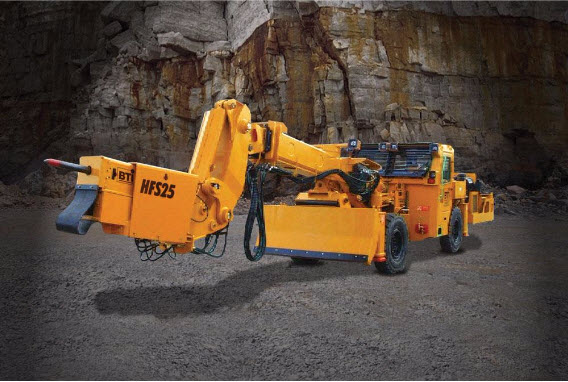5.2.1: Ground Control
An Overview of the Requirement
One of the more important and defining characteristics of mining engineers is their ability to design structures in earth materials. Few appreciate the incredible challenge this presents. Consider that if we want to design a building, we can go to a handbook and find the exact mechanical properties of our building materials, whether they are steel beams, lumber, or concrete. Important engineering challenges may remain in the design of the building, but at least we know the properties of our building materials.
…not so when we are constructing something in the crust of the earth. Sure, we can conduct lab tests and that is helpful, but significant uncertainty remains throughout the property in many cases. Even when we have a well defined material, a limestone for example, it may have structural defects due to geologic processes that result in fractures, joints, and so on. Once past the hurdle of knowing the properties that we are working with, we have to work with them! That is to say, some of the materials may be “inferior” or “substandard” to use construction terminology. But, in our case, we can return those “inferior” rock structures to the maker, and demand new ones with better properties. And here lies what can be a daily challenge for the mining engineer: maintaining a stable and safe rock mass to allow mining of the valuable commodity.
Whether we are designing and operating a surface or underground mine, this will be a challenge of varying degrees. In the surface mine, we are concerned with a failure of the slope or the highwall. If it is too high or too steep or if there has been an influx of groundwater, or… we can have a failure. The failure could kill all of the workers in the area, destroy or bury the equipment, and result in costly production delays. In an underground mine, we develop a series of openings to access and exploit the deposit. If any of those openings cave in, it can have disastrous consequences for the miners and the overall viability of the operation. The art and science of safely designing structures in the earth is captured in the term ground control. The coursework in engineering mechanics, strength of materials, and rock mechanics will give you a solid theoretical foundation, and then courses in ground control along with years of experience will enable you to succeed in this endeavor.
I think you are beginning to appreciate the importance of this auxiliary operation, which is an intimate companion with the unit operations of the production cycle. Here in this course, we’ll talk about how the ground conditions affect the mining methods and the sequence of operations, and some of the practices that are used to “control the ground” to prevent unwanted and unexpected failures.
Ground control is achieved in part through the design of the structures. For example, the engineer will design spans that won’t fail or determine the angle of the highwall to reduce the risk of a slope failure. We’ll leave the design component of ground control to other courses. Operationally, after the design, ground control is achieved in part through the use of various technologies. Uses of these technologies are an ongoing part of the production cycle, and as such are of special interest in this lesson.
Cyclical Practices
After drilling and blasting, the integrity of the surrounding ground will be inspected. This will happen prior to loading to ensure that miners engaged in the loading operation are not put in danger. This check is imperative in underground mining, and in many surface mining operations. There may be pieces of rock that have cracked but hung up, and they may fail without warning. Or there may be loose pieces that could fall. Thus, the inspection will be the prelude to scaling or barring, i.e. the act of knocking these pieces free. In a low seam mine, with minimal need for scaling, this may be accomplished with miners using a steel bar with a chiseled edge. When it is impossible to reach the area that needs scaling, then equipment will be used. Here is a scaler that is found in metal/nonmetal mines; and primarily but not exclusively in underground mines. It has a telescoping boom to reach high places and a pneumatic hammer to release any worrisome pieces of rock. The operator remains inside the cab, which provides protection from falling material. Notice also the dozer blade on the front. It is used to push a fallen material out of the way.
Ok, so this inspection and scaling represents the first auxiliary operation.
Once the area has been scaled, it will be safe to bring in equipment for loading and hauling in some mines – mines with competent rock that is not going to cave. In some mines, it is necessary to take further steps to improve the opening to ensure that the rock strata is not going to fall onto the miners, and this must be done before miners work in the freshly mined space. If additional reinforcement of the rock is required, then that will be the second auxiliary operation.
We’ll take a look at some of the equipment used to reinforce the rock, but first, a quick tutorial on the options for adding additional support to the ground.
